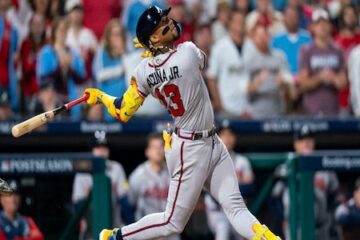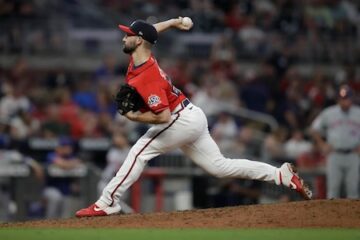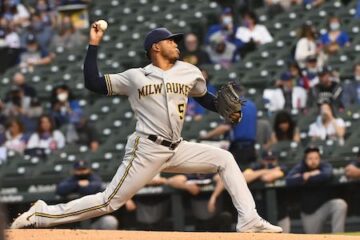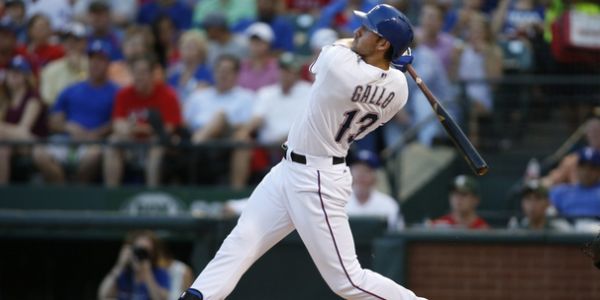2016 Fantasy Baseball: Breakout Candidate — Joc Pederson
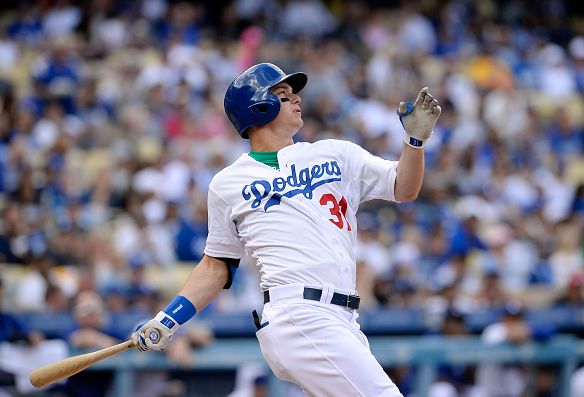
For years, the Yankees were the symbol of decadence and willful spending in the sport. George Streinbrenner made no bones about outspending anyone and everyone to get his team to the playoffs. When he passed away, his sons reigned it in some in an effort to avoid paying the onerous luxury tax attached to exceedingly high payrolls. When the McCourts finally sold the Dodgers, their new ownership said damn the torpedoes and went into a kind of spending spree that would make the Kardashian’s jealous.
Funny, but it is the young players with the Dodgers that seem to be the key to their success during this period. Joc Pederson is chief among those young players that the Dodgers are attaching their hopes to. During a Dodger telecast, venerable announcer Vin Scully said Pederson was the best defensive center fielder he ever saw play for the Dodgers. He began broadcasting games back in 1950. That’s is some pretty effusive praise.
The advanced defensive metrics did not agree (unless the Dodgers have had a series of lousy defensive centerfielders over the last 60 years), but anyone that has a cursory look at the offensive numbers sees the massive potential there. He was the biggest stud in their system in 2014 when he went 30/30 in a mere 121 games in 2014. Obviously, everyone is excited about his potential.
Where he has been
| AVG | HR | Runs | RBI | SB | |
| 2015 | .210 | 26 | 67 | 54 | 4 |
Here is where we get into the “where can he go” game. Pederson struck out 29 percent of the time last year in his first season as a regular. No one expects him to do that again, but no one is quite sure how much improvement there will be. In four full minor league seasons, he struck out 17 percent of the time, 16 percent of the time, 22 percent of the time, and 27 percent of the time. Obviously, contact became more an issue as he went further up the minor league chain. Then again, he never got to play at the same level two years in a row.
The experts are mixed on where they think Pederson will go in terms of contact. A couple have him improving slightly in his strikeout rates while another has him getting slightly worse. His .262 BABIP almost certainly should improve, so if one assumes it goes up to a customary .300 you could see his batting average up around .250. That coupled with his obvious power and obvious speed makes him a definite breakout candidate.
Where he could go
| AVG | HR | Runs | RBI | SB | |
| Depth Charts | .224 | 25 | 74 | 68 | 12 |
| Steamer | .228 | 23 | 70 | 66 | 11 |
| ZIPS | .220 | 23 | 70 | 62 | 12 |
Technically speaking, all three of the expert projections have Pederson improving some. Still, the improvement they project is tepid at best. His average still looks to be troublesome simply because he doesn’t make enough contact. The standard contact rate in MLB is around 80 percent. Last season, Pederson came in at just above 66 percent. Still, if we take that as a floor then there is nowhere to go but up.
Pederson average more than 20 home runs and 20 steals at the minor league level. It’s easy to get excited about that and still there were signs of trouble along the way. His BABIP at the minor league level was well over .350 collectively. So, while you could point to his healthy batting averages, we should have known that he wasn’t going to be able to keep this up. Still, he shouldn’t be hitting .262 on balls in play either. The projections have him hitting about 20 points higher next season. That might not be totally generous considering his speed. If you add twenty points to the averages above you could get closer to where Pederson might go.
A Rosy Picture
| AVG | HR | Runs | RBI | SB | |
| 600 PA | .210 | 27 | 69 | 55 | 4 |
There is a difference between what we might call a mathematical model and a common sense model. Math models have to be followed religiously or they are rendered meaningless. Yet, one can’t help but wonder what the meaning of these numbers really are. A common sense model looks at the relevant data and makes certain assumptions. The first relevant assumption is that Pederson is not likely to have the same bad batted ball luck this season. A modest increase (to say .300) would have him hitting around .250 in the same set of circumstances.
The second assumption is that Pederson will make more contact in year two than he did in year one. This assumption is actually a little more shaky since we really have less to base it on. It comes to a guess that Pederson will improve in his second year on the job. It’s a decent assumption even if we have no direct evidence to base it on. In that scenario, his average could increase to .260. If Pederson becomes a .260/30/80/80/20 player then he becomes a fantasy regular and is a value at his current ADP.


